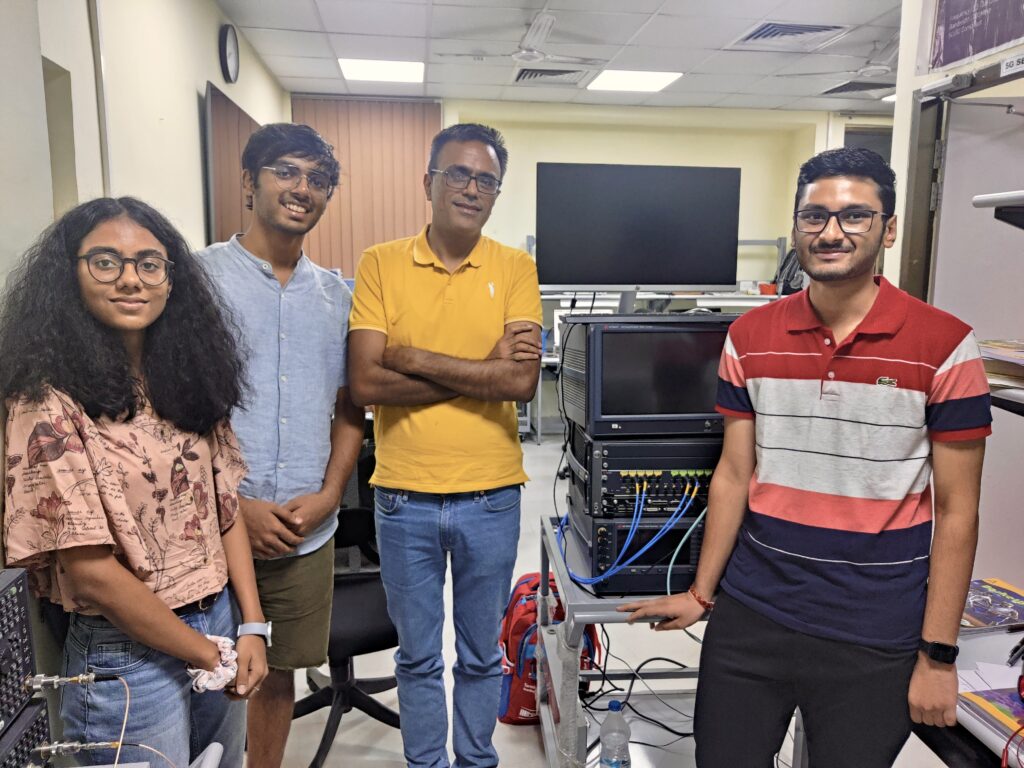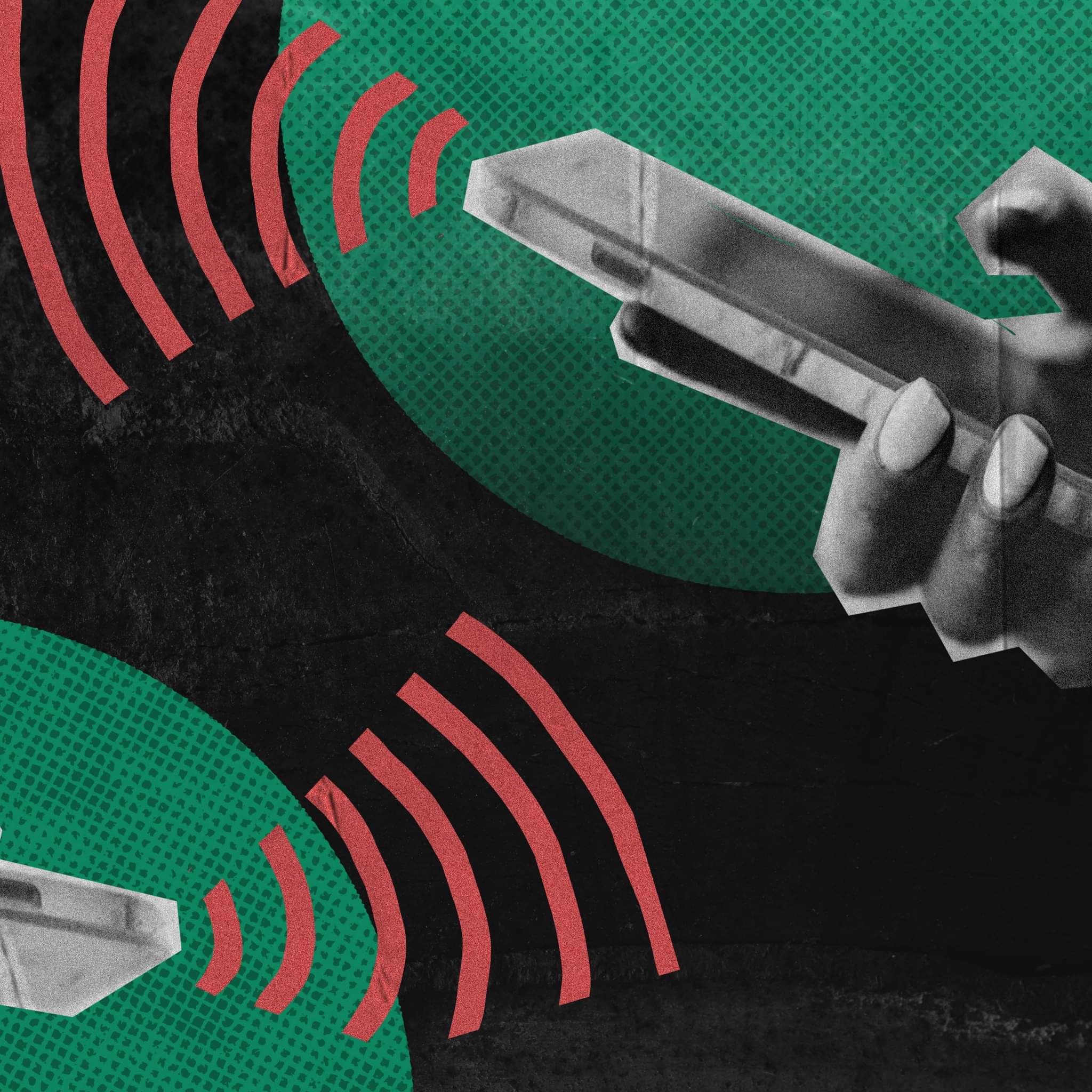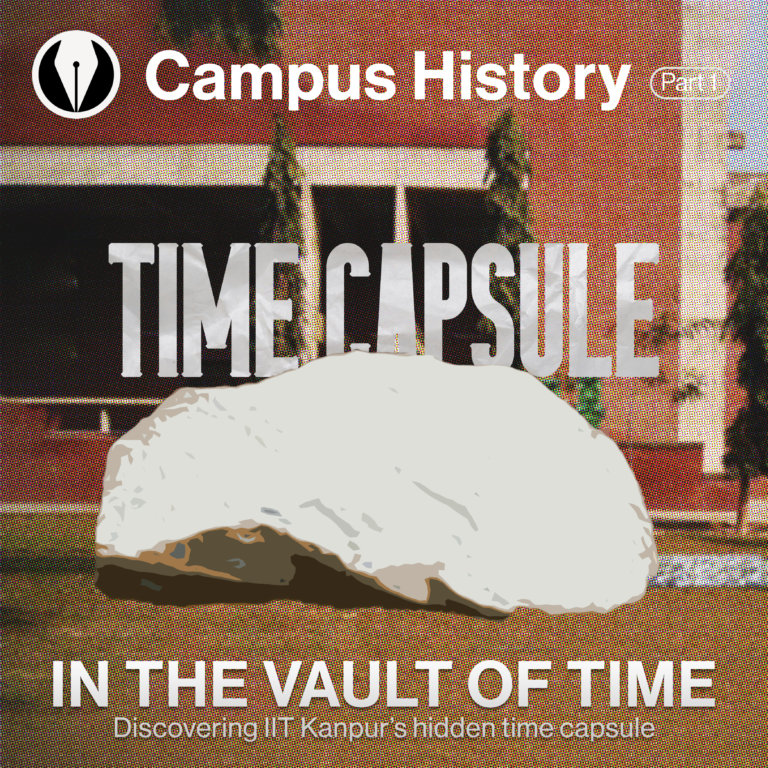A team of engineers and research scholars led by Prof. Rohit Budhiraja from the Electrical Engineering department of the Institute has contributed to the design of the first indigenous 5G network. The complete hardware and software of this 5G network was built from scratch, and that too completely inhouse. India’s first 5G call was recently made using this network by the telecom minister. Vox team talked to Prof. Budhiraja to break down the development and what it means for the country:
About the Project
The 5G mobile network consists of our phone, the base station (BS), and the core network. A BS further consists of three different sub-systems: baseband unit (BBU), remote radio head (RRH) and the antennas. The BBU is the heart of the 5G network which processes the data which needs to be transmitted by the BS to the user or receive from it. To indigenously build the 5G technology in the country, various institutes worked on different parts of the 5G network. While IIT Bombay developed the core network, IIT Kanpur and IIT Madras took up the responsibility for development of the entire BS hardware and software.
This is the first nationally-endorsed project globally for the 5G initiative. While a few private corporations have been significant players in the market, India as a nation emerges as the first country to indigenously build a 5G network.

Why is it important to develop an indigenous network?
All our systems are dependent on telecom networks today. If this network falls into the wrong hands or is controlled by a monopolized market, then critical systems of the entire country lie susceptible. This is one of the reasons why we should have indigenous technology. Such indigenous system design also helps in training the young engineers who want to solve challenging problems. It also helps in reducing the telecom import bill, which is currently the second highest after that of oil. Although a few Indian companies have developed system components, they are isolated components and do not constitute the entire network.
How is 5G different from the previous generations' mobile networks?
5G and previous telecom generations primarily differ in three broad aspects over a 4G network
- Bandwidth: Increased from 20 MHz in 4G to 100 MHz in 5G. Data rate can be linearly increased by increasing the bandwidth.
- Antennas: Increased from minimum of 4-8 at the BS in 4G to minimum of 64 in 5G. Research in the early current decade envisaged the idea that data speed can be radically increased by increasing the number of antennas at the BS.
- Different verticals: 4G standard was designed for only humans to communicate. 5G is designed to enable a massive number of machines e.g., electricity and water meters to communicate. It will also provide ultra-reliable-low latency communications for example to enable driverless cars to ply on the road.
The 5G system design complexity, when compared with 4G, due to the aforementioned aspects, has also increased exponentially.
What challenges did you face? How did you overcome these challenges?
We had to tackle numerous problems in our journey, but I’ll particularly share one incident we had while testing the BBU, which consists of a motherboard, and our custom hardware card. Both of them communicate via a PCI connection that acts as an interface to send data. The correct way is to connect the custom hardware card’s transmitter with the motherboard’s receiver. However, due to a small overlook, our team connected the card’s transmitter to the motherboard’s transmitter.
Although it looks like a naive error, it was a significant blunder. The motherboard didn’t detect the card, and our team went clueless. We had to spend a lot of time understanding which component was going wrong. Without testing the transmitter, we couldn’t test the card. We realized our mistake after almost three months of rigorous testing.
Interestingly, a cross helped us verify if the card and the transmitter are working. However, in the entire globe, there was just one vendor for cross-cable. Thankfully we ordered the device before the lockdown and as soon as the cable landed in IIT Kanpur, we could confirm that the card was working properly. Hence, with just a few design changes, we were ready to roll. This helped in reducing the overall system design cost.
Building a subsystem is challenging, and bringing all of it together is even more complicated. The more complex the problem is, the more satisfaction it gives to make it work. The urge to solve complex problems drove my students to leave their high-paying corporate jobs, come back and work on these projects.
Plan forward for your lab
Every decade, there is a generation shift in the telecom industry – 3G in 2000, 4G in 2010, and 5G in 2022. So by 2030, we can expect 6G to get materialized. The standards of different generations are designed by standard making bodies. My lab first performs theoretical research on 6G technologies. We do this first by analyzing these technologies using advanced mathematical tools like machine learning, convex optimization, information theory, and linear algebra. We then push these ideas to standards. My team regularly attends standard meetings, which were being held online, and have recently become offline. They will soon start traveling abroad to attend these meetings, and that too every month and a half.
Advice for Students
There are a lot of challenging theoretical and practical research problems in the 5G+/6G wireless domain which are waiting to get cracked. We need motivated and hardworking students to work on them. My advice is once you start working on these problems, you need to be patient while solving them. You should not get deterred by the impediments you might face. It is about being patient and tackling them. Students should be willing to make mistakes, learn from them, not repeat the old mistakes, and again willing to make fresh ones. We have had a lot of B.Tech students with such an attitude. They have worked with complete determination with us in their 4th year, and have even got their papers published in one year. All such students are now either doing cutting-edge research in their PhD or working in top-notch wireless research companies.

Change in Research over the years
During my masters, the inclination toward research was relatively low. Wireless companies could not find students who had experience working in wireless networks, as students did not opt for research. The change in attitude came in the last 20 years, when the government focused on promoting IITs as research institutes. Now, there is a transition in IITs from undergraduate teaching institutes to research institutes.
This change is visible in also the teachings imparted as we offer state-of-the-art courses which are relevant for both theoretical and standards-based research. The undergraduate and postgraduate students can now equip themselves with the relevant skill-set by first doing relevant courses, and then performing the cutting-edge research, which will help them in building a promising career.
Written By: Gauravi Chandak, Utkarsh Agarwal
Edited By: Dev Barbhaya, Pradeep Suresh











